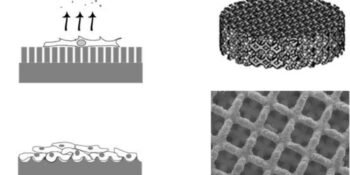Key Points:
- EPFL researchers found that different light wavelengths can change magnetite’s state, affecting its electrical conductivity.
- Magnetite’s unique properties make it valuable. Researchers focused on its out-of-equilibrium switching properties using light-induced phase transitions.
- Ultrafast electron diffraction revealed structural changes. 800 nm light compressed magnetite’s lattice, while 400 nm light expanded it.
- The ability to control hidden phases in magnetite could impact the development of advanced materials and devices for future electronics.
Researchers at École Polytechnique Fédérale de Lausanne (EPFL) have discovered a groundbreaking method for manipulating the state of magnetite using different wavelengths of light. The achievement could revolutionize the future of electronics. Shining specific light colors on magnetite can alter its electrical conductivity, creating new opportunities for innovative electronic materials.
Magnetite, the oldest and strongest natural magnet, has unique properties that make it significant in spintronics, where devices operate based on the spin of electrons rather than their flow. This mineral has also played a crucial role in the study of magnetism, attracting the attention of notable scientists like Einstein. Its magnetic and electronic properties are extensively researched in biomagnetism, catalysis, and paleomagnetism.
The latest research by physicist Fabrizio Carbone at EPFL focuses on magnetite’s out-of-equilibrium switching properties. Carbone’s team previously demonstrated that laser energy could induce an inverse phase transition in magnetite, akin to turning water into ice by adding energy. This counterintuitive process has been further explored to control magnetite’s microscopic structural properties during light-induced phase transitions.
Their study revealed that using specific light wavelengths for photoexcitation can drive magnetite into distinct non-equilibrium metastable states, known as “hidden phases.” These phases can be manipulated at ultrafast timescales, presenting a novel protocol for controlling material properties.
Non-equilibrium states are when a material’s properties change due to imbalanced internal forces. Magnetite’s metal-to-insulator transition, known as the Verwey transition, is a key example, where it switches from conducting electricity to blocking it at around 125K.
The researchers used ultrafast electron diffraction to monitor structural changes in magnetite induced by laser pulses. Two wavelengths were tested: near-infrared (800 nm) and visible (400 nm). The 800 nm light disrupted magnetite’s structure, creating a mix of metallic and insulating regions, while the 400 nm light made magnetite a more stable insulator.
These experiments showed that 800 nm light rapidly compressed magnetite’s monoclinic lattice, shifting it toward a cubic structure. In contrast, 400 nm light expanded the lattice, reinforcing its monoclinic structure and enhancing its insulating properties.
Understanding these light-induced transitions offers valuable insights into the fundamental physics of strongly correlated systems. The ability to control hidden phases in magnetite could lead to advanced materials and devices for next-generation computing and memory technologies.











